What Is the Flipped Classroom?

A Student’s Story
She walks into class and other students look twice because she’s actually there, for the first time in weeks. They give her curious looks, and try not to be rude, but she can’t help but notice how her presence throws off the balance of the room.
She’s glad to be back, though, and she’s so thankful for the warm greeting her teacher gives her. It helps her through the fact that the last month has been pretty touch and go for her with all kinds of doctor’s appointments and various medical issues. It wasn’t her fault she was absent - sometimes life takes higher priority than even school.
She’s glad to be back, but being back means she’s got some major catch up to do. Just after one day back at school she feels this immense pressure and weight on her chest that eventually exacerbates her existing medical condition, compounding its effects both physically and in her education.
It’s just exhausting.
A Teacher’s Story
She is sustaining the pace of being able to p...
AP® Psychology Resources for Unit 7 Motivation, Emotion, Stress & Personality
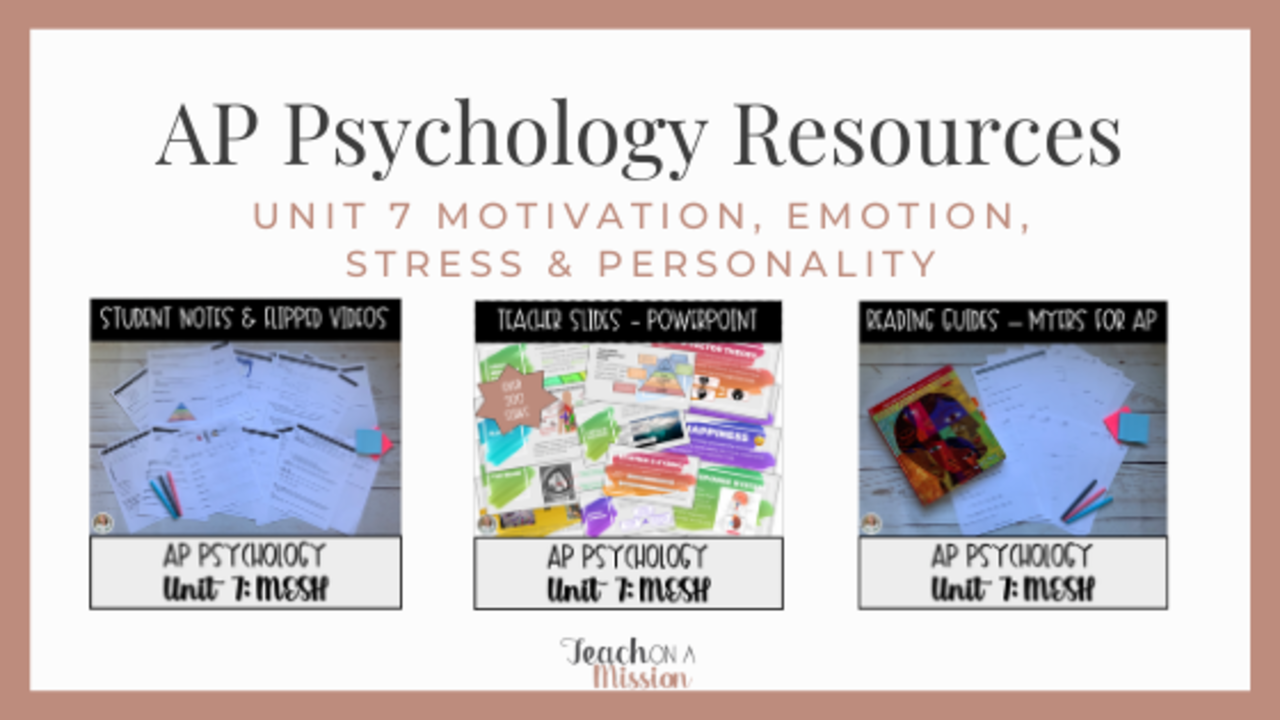
Phew. I've finished up the biggest haul of resources to date because of CollegeBoard's reorganization with the new CED in AP® Psychology.
Seriously - phew!
I can't wait to show it all to you, and to provide you with a fun free resource you can use to get your students up and moving just for sticking around here at Teach On A Mission.
So, what do we have here in Unit 7 - well it's a big one. Much like Cognitive Psychology, you'll want to be sure and keep this one nice and compartmentalized for students, helping them know where they are in their studies at all times.
I hope you find these resources helpful so you can spend time connecting with your students rather than on the wheel of content creation.
Slides
Let's start with the slides. There are 12 sets of powerpoint slides in 12 big topics covered throughout the unit. I like this unit in a flipped classroom, as I do all units, but I have to say the discussion that comes from these topics in class is pretty awesome. Be sure ...
How the Flipped Classroom Changed Everything For Me
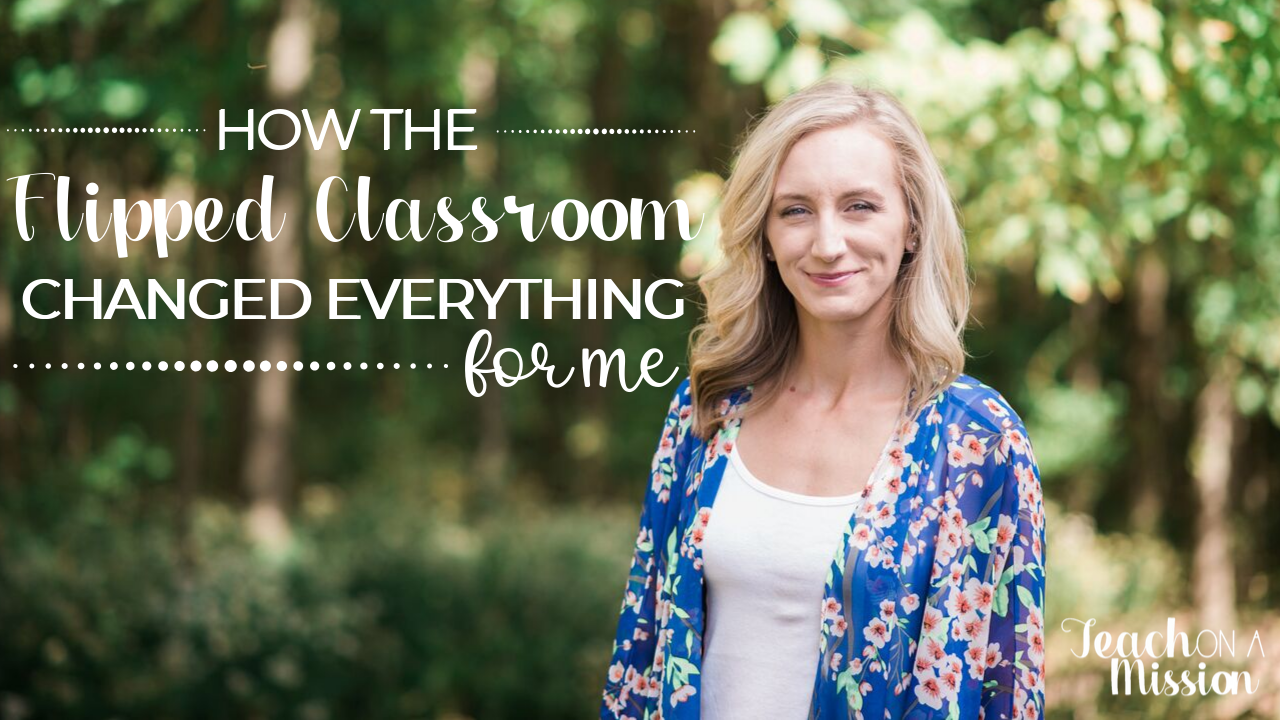
I've been thinking about this post for a while and how to go about writing it. Better yet, I've been thinking about all of the things I'd like to include in it because it's hard to put the words together to describe how the flipped classroom changed so much for me.
To me, flipping is such a simple idea. Just flip how you deliver the content with what is traditionally homework, and you've done it. But I guess that's a bit of an oxymoron to say that flipping something on its head is simple.
Truly it is simple, and so are clear results you'll see in your classroom and your students. But the process of making it happen, once I step back and think of all that goes into it, really isn't the simplest process in the world.
And that's why I want to support you on your journey of flipping your classroom. It's not an easy journey. It certainly wasn't easy for me when I took on the task on my own about nine years ago, and that's not something I want for you.
I have the data to show the...
3 Must-Have Flipped Classroom Procedures
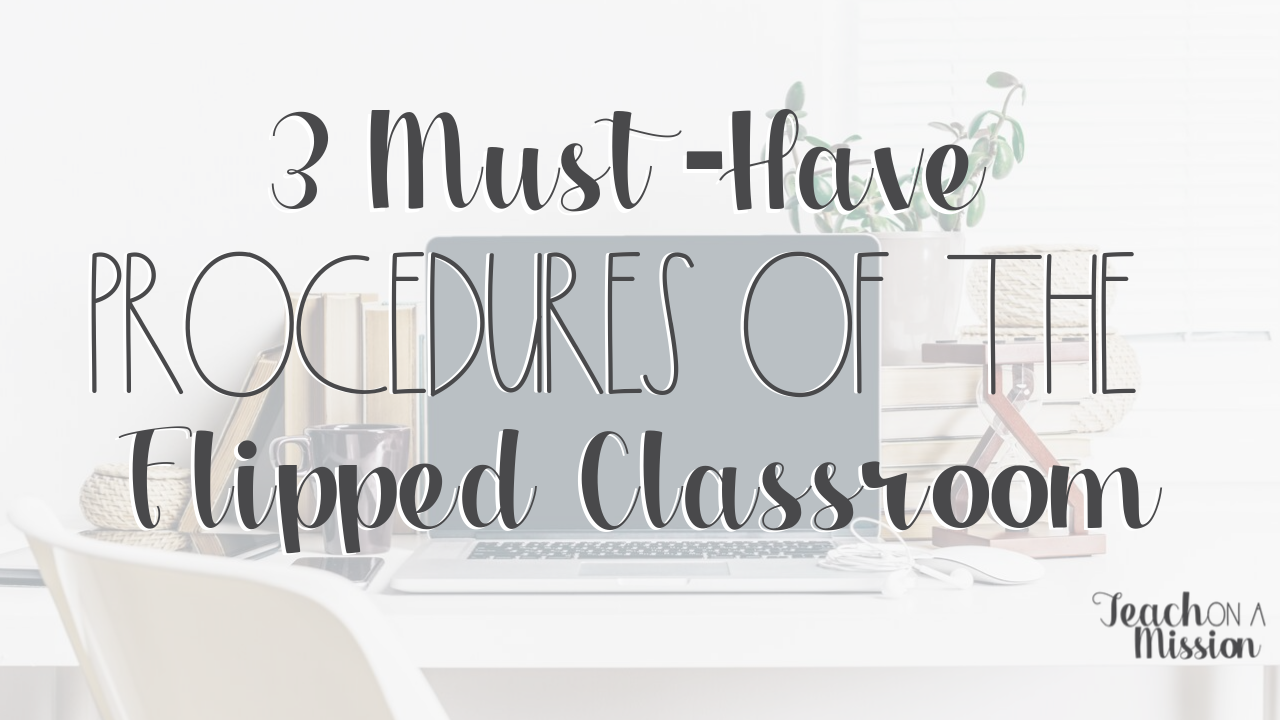
This week I want to be sure that I'm giving you as much practical flipped classroom strategies as possible. No matter the flipped classroom model you choose (which you can learn about in the Ultimate Flipped Classroom Starter Kit here), you want to rely on solid procedures in your class.
In this post, I will be bringing you the major three themes and desires behind procedures I had in my classroom, and what I recommend to all of the teachers in my online course, Flipped Classroom Formula. These are absolute musts for any thriving flipped classroom.

1. Student Content
In my online course, Flipped Classroom Formula, there is an entire MODULE on just this topic... student content and what that looks like. Here's the big secret... student content is NOT your videos.
Shocker, I know.
Here's the thing, you HAVE to have a procedure for what your students will be doing when they watch your videos. You can't just leave them out for the wolves and hope they make it through. Nope, y...
3 Unforeseen Wins of the Flipped Classroom

Ten or so years ago when I decided to flip my classroom the reasons why I wanted to flip were very clear. Crystal clear.
From wanting to do more than just lecture all day to increasing student accountability and ownership over their learning, I knew the flipped classroom model would get me closer to those goals. I could go on and on about finding and solidifying your WHY for flipping, and I give most commons reasons why in this post, but it's something we dive deeply into in my online course where I walk teachers through, step-by-step how to flip their classroom, called the Flipped Classroom Formula.
I won't spend time in this post talking about reasons to flip because, I'm betting, you know what those are. And if you don't know them for sure, you do have some idea of why you're looking into this whole flipping thing, and I want to help you solidify and optimize those reasons if you become one of the teachers who joins me in the Flipped Classroom Formula.

This post is all about...
5 Myths You Can STOP Believing About the Flipped Classroom

The flipped classroom has been around for probably close to 15 years. In the education realm, it's not a brand-new concept, but it is one that is gaining traction with more and more teachers because of the many ways it can improve classroom engagement and the performance of students.
However, there are quite a few misconceptions about the flipped classroom that prevent teachers from even considering it. In this post, I want to flush out those misconceptions so that teachers can consider flipping for what it truly is.

1. It takes too much TIME.
First thing's first. Let's start with the big one. I like to address the elephant in the room, and this is definitely one of them. Here's why... because it does take time. Flipping your classroom very much takes time to craft and master. But here's the thing - it's not that it take more time, it is a trade off in time spent.
The big goal of the business world is to be cognizant of and have a fantastic return on investment (ROI), righ...
5 Important Decisions to Make to Flip Your Classroom
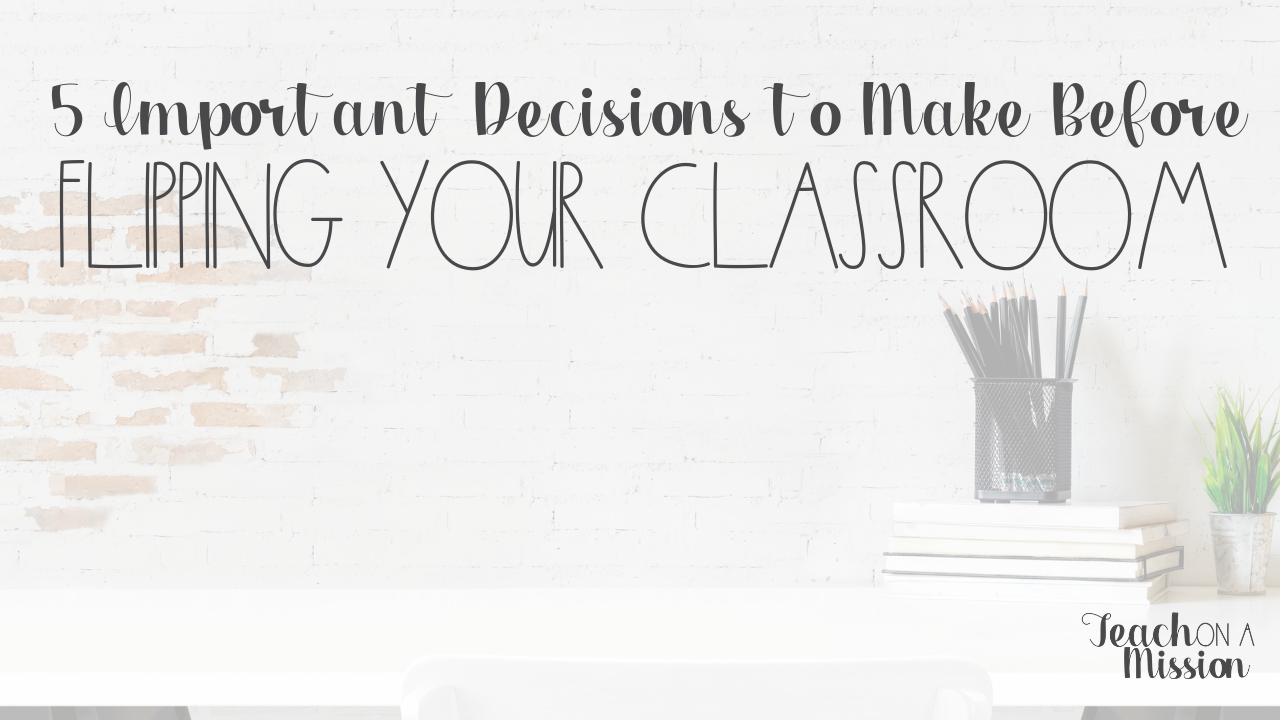
When you are starting your journey in flipping and doing your flipped classroom research, you are searching for things like flipped classroom how to, flipped classroom ideas, flipped classroom approaches, and flipped classroom pros and cons.
You are looking for any and all ideas to inspire you and get you started on your journey. And that flipped classroom research can quickly become a black hole that sucks you in, and two hours later you come out and wonder, "Holy cow, what did I just learn from that?"
Hopefully you gleaned something from your searches, because there really is plenty out there, so I'm sure you did. But wasn't it quite overwhelming? Wasn't there so much to take in, and then you're left deciding, "What's going to work for MY classroom?" And, "Yea, but how do I get started flipping my classroom?"
I can't tell you how many times I have been sucked into the rabbit hole that is Google image, Pinterest, or searching tags on Instagram for inspiration to make a change in...
When Students Don't Do Their Homework in the Flipped Classroom
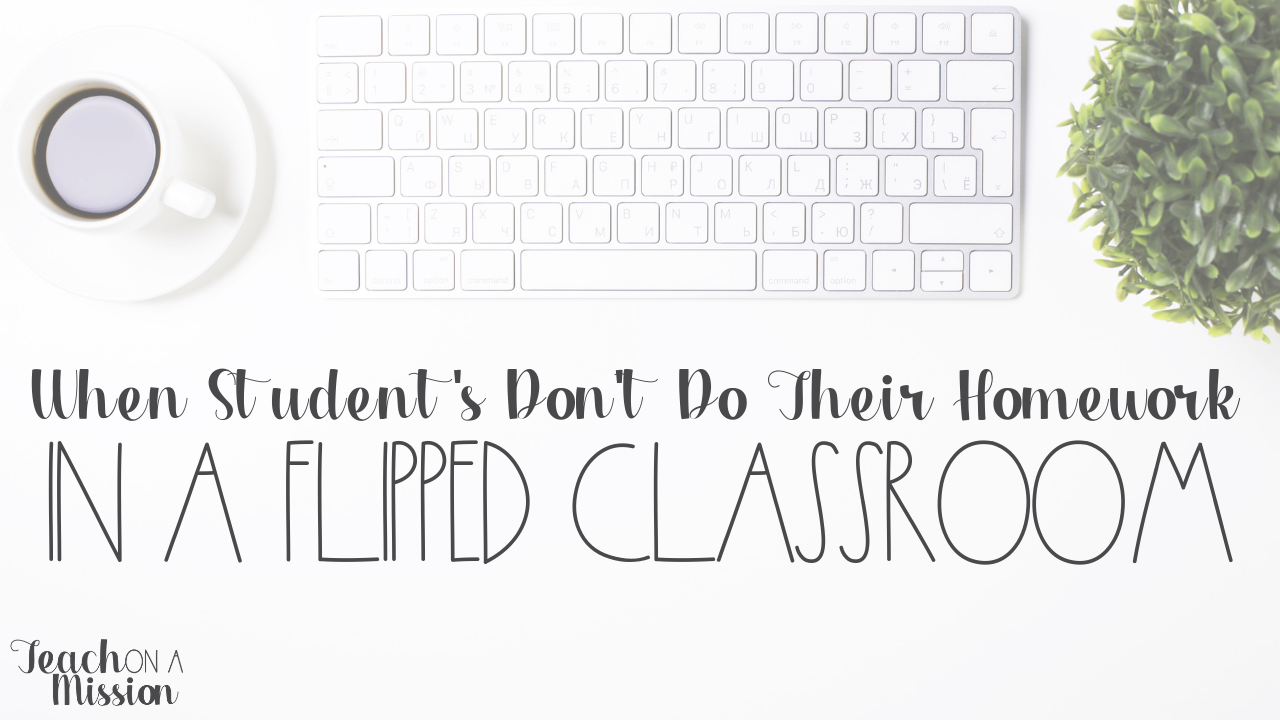
Homework is a long, and hotly debated topic in the world of education. I don't need to remind any teacher of this debate. It's one that many teachers put a big, giant stake in the ground, and don't budge from assigning, and there are others that refuse to assign any at all.
There's tons of research for all grade levels that I won't bore you with, but do encourage you to check out sooner rather than later if you haven't yet, all about its effectiveness or lack thereof. But, really, no matter what the research says, homework is yet another pendulum that often swings from one extreme to the other as years pass and as kids are still being educated around the world.
What is homework in the flipped classroom?
In the "traditional" flipped classroom, if that's even a word you can use to describe flipping, homework is now what WAS in-class work. See, in the traditional classroom, students sit at their desks and receive information via the teacher through lecture - especially in the conte...
Why Would I Flip My Classroom? Answered.
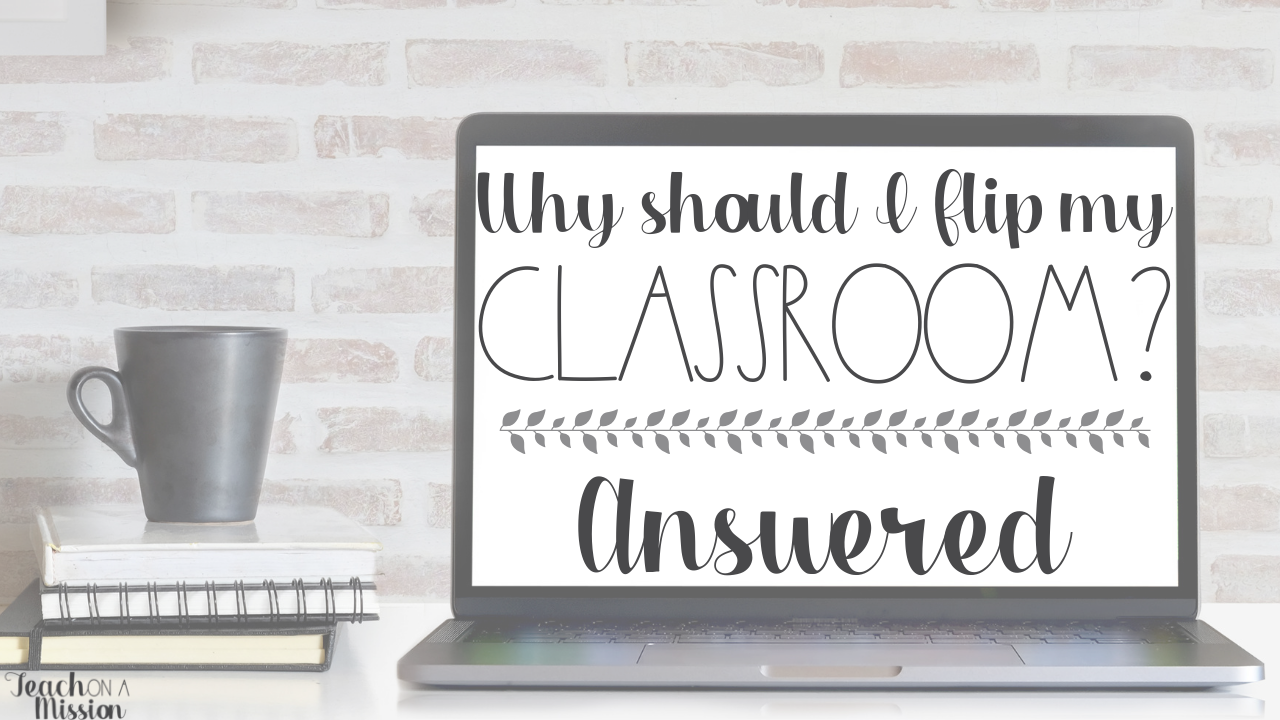
Last week we chatted about the first two weeks of school and how to set up your flipped classroom for success, because let's be honest, the first two weeks are so important in addressing challenges that you KNOW you will face.
Here's my not-so-secret secret...
The flipped classroom allows you to face the unique challenges you KNOW are present for you and your students HEAD ON.
Each classroom has its own unique challenges, and I can not begin to list or even fully understand what those are. That's part of what we do as teachers; we teach in our unique schools, to our unique kids, and that makes each of our jobs different even from one teacher to the next.
The flipped classroom, however, allows you to face some of the big challenges that you'll find in many classrooms, and this post is all about answering the big question...
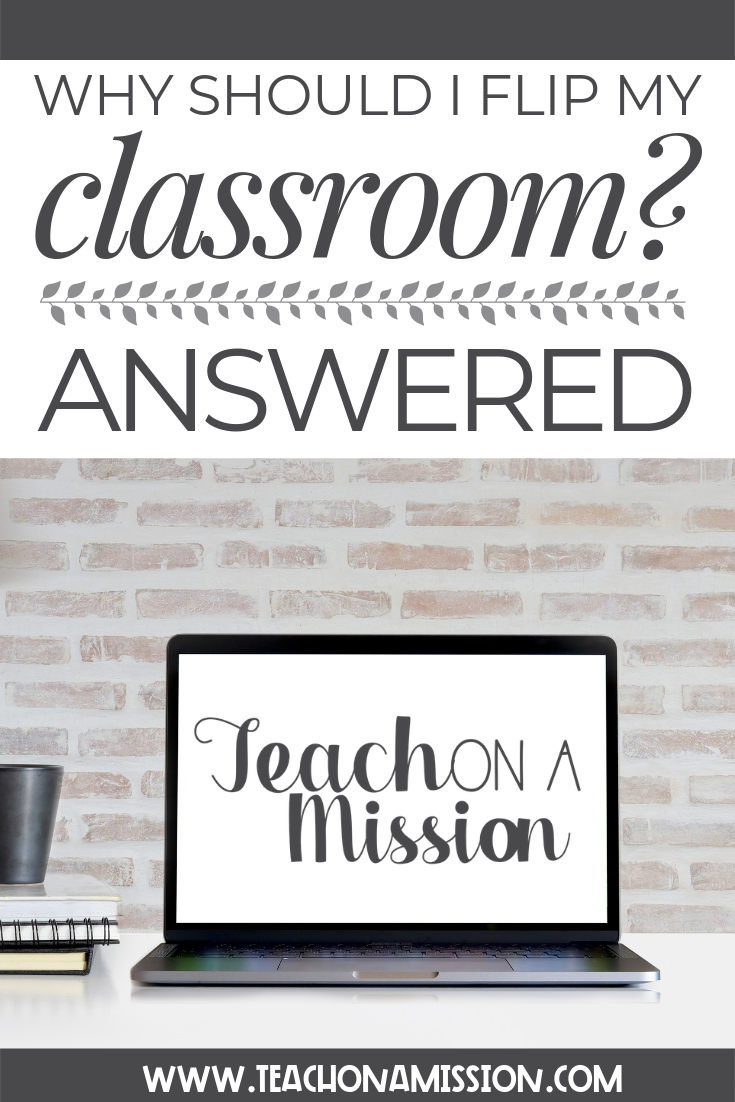
Weather
What an odd one to start with, but I've got a personal story to share with you on this one. It relates to last week's post because the challenge I ...
The First Two Weeks in the Flipped Classroom

Here at Teach On A Mission, like every other teacher, everywhere, we are in total back to school mode. And you can't be prepared to start a school year without talking about, preparing for, and understanding the significance of the first two weeks in the classroom.
The flipped classroom is no different.
Or is it?
Well, it kind of is.
The first two weeks in the flipped classroom are important not only so you can establish rapport and boundaries that benefit your classroom management abilities just like in the traditional classroom.
Yes, that's important, but in the flipped classroom, the first two weeks is MORE about empowering kids.

(photo by Nicole Honeywill, https://unsplash.com/photos/E3I2zjwGudM)
It's about empowering your students to own their learning, and know how to learn well.
So, in this post, I want to give you a picture of that classroom atmosphere, as well as some techniques to use to build that atmosphere and empower your students.


